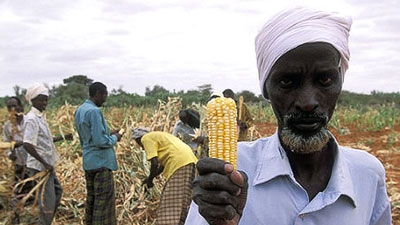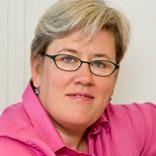Spending on agriculture is a wise investment; long after you contribute, the benefit continues, said Bill Gates, reaffirming the Bill & Melinda Gates Foundation’s commitment to agriculture. Gates made the remark during a dialogue with the CGIAR Fund Council, which held its spring meeting at the Foundation in Seattle on March 7-8.
Chaired by the World Bank’s Vice President of Sustainable Development, Rachel Kyte, the Council is the decision-making body of the CGIAR Fund, the largest public vehicle for financing international agricultural research that aims to reduce rural poverty, strengthen food security, improve human nutrition and health, and enhance natural resource management.
“Capitalism underfunds research, particularly research that benefits the poorest,’’ explained Gates. Hence the need for the CGIAR’s unique role. “If the CGIAR system didn’t already exist, we’d need to invent it.”
To capitalize on the CGIAR’s expertise and potential, Gates called for a focus on long-term goals, rather than on narrow projects, which take resources away from research on international agricultural innovation on behalf of the poorest people.
This approach is in direct alignment with the CGIAR’s new research strategy, which sets out common goals, objectives, and results. CGIAR research is carried out by a Consortium of 15 international agricultural research centers, working closely with hundreds of partners worldwide, through a portfolio of CGIAR Research Programs (CRPs) that tackle a range of issues, including crop improvement, climate change, natural resources management, nutrition, markets, and policies.
During its meeting in Seattle, the CGIAR Fund Council approved three new CRPs on grain legumes, dryland cereals, and agriculture in the humid tropics. In giving approval, the Council provided specific guidance on refinements needed to each CRP before it can begin implementation.
Setting Goals, Measuring Progress
To receive funding, CRPs must set out their expected achievements and provide verifiable targets against which progress can be measured and monitored, thereby linking funding to results.
In support of measurable results, Mr. Gates called for the use of “scorecards” or report cards that would enable players in the international agricultural system to set goals and be measured against them. Report cards could be used to diagnose failure, identify successes, and ultimately learn lessons from them.
Above all, Mr. Gates views scorecards as a means to measure productivity, which he said is the “gold standard and “more important than anything” in assessing the success of agricultural interventions.
Productivity and Biotechnology
Gates said that it’s important that productivity gains—the focus of the Foundation’s agricultural strategy—benefit smallholder farmers and women, and lead to poverty alleviation and improved nutrition. In Africa and Asia, the Foundation seeks to triple and double productivity, respectively—targets that Gates believes are very achievable if the system takes advantage of the latest science, including agricultural biotechnology.
As countries struggle to feed their growing populations, while facing challenges such as extreme weather and climate variability, Gates believes biotechnology will be an indispensible tool for creating crops that are higher yielding and resistant to heat, drought, and disease. The Foundation has been investing in African expertise in this area so that countries can make their own, informed decisions about whether or not to use this technology.


